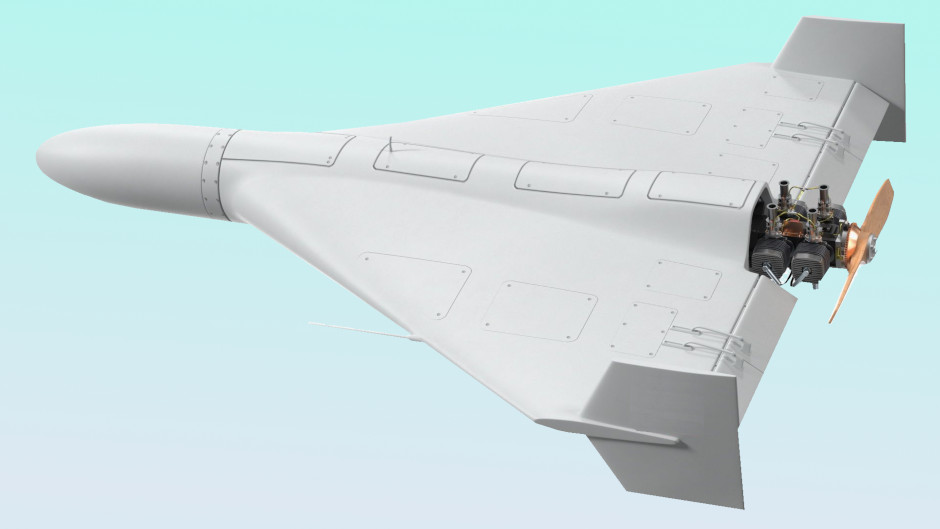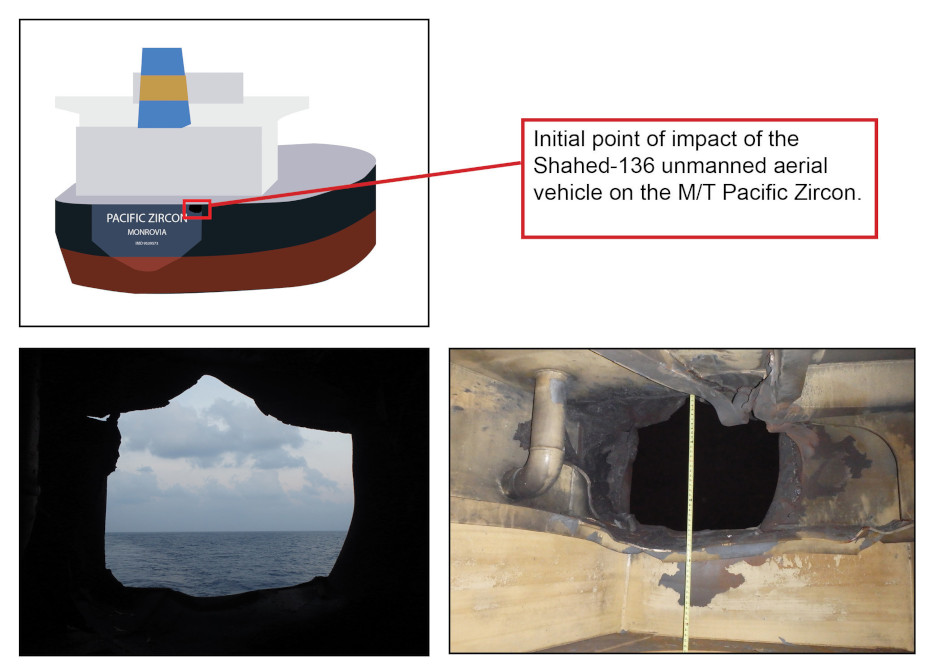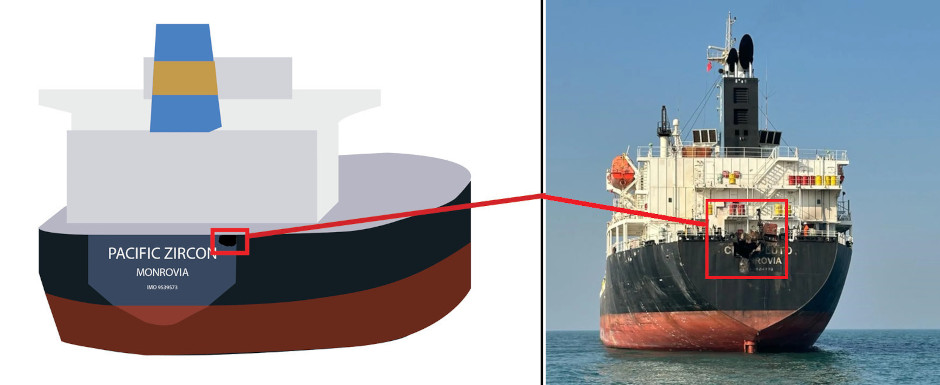Drone Warfare's New Angle: Iran's Shaheds Become Low-Cost Anti-Ship Missiles
 Iran’s IRGC (Islamic Revolutionary Guard Corps) are known for their outlandish claims and propaganda equipment parades. Despite the hype much of their equipment and tactics should be taken seriously. Especially in hybrid warfare scenarios which are currently playing out in the Red Sea and Indian Ocean.
Iran’s IRGC (Islamic Revolutionary Guard Corps) are known for their outlandish claims and propaganda equipment parades. Despite the hype much of their equipment and tactics should be taken seriously. Especially in hybrid warfare scenarios which are currently playing out in the Red Sea and Indian Ocean.
Iran, and now the Houthi Movement in Yemen, have a vast array of weapons with which to strike ships. From traditional anti-ship missiles to new-fangled anti-ship ballistic missiles and remote controlled explosive boats. And there is another emerging threat, attack drones which can hit moving ships.

Shahed-136 OWA-UAV
These drones do not represent the same degree of threat as proper anti-ship missiles. In general, they should be much easier to shoot down and pack a smaller warhead. However, they are much cheaper and particularly suited to some targets like merchant ships. And because of their low cost and minimal ground footprint, they offer new tactics and scenarios. For example they can be expended in opportunistic missions where they are flown to a general area before a target is decided.
Multiple Attacks: Joining The Dots
On December 23 2023 the Israeli-linked tanker MV Chem Pluto was hit by a drone. Significantly, the ship was far out in the Arabian Sea as it sailed towards India, well over the radar horizon from shore. U.S. forces said that the drone had been launched from Iran. This makes sense given its location so far from Yemen where the Houthis have been launching similar attacks. The drone was likely a Shahed one-way-attack uncrewed air vehicle (OWA-UAV).
It is impressive that Iran has been able to hit ships at very long ranges. We should take note.
And it is not the first time Iran has used them. A year earlier on November 15 2022 another Israeli linked tanker, the Pacific Zircon, was hit in a similar way off Oman. The similarities between the two attacks are striking.

US Navy Image
There was another earlier drone strike on an Israeli linked tanker off Oman. The MT Mercer Street was hit in the bridge on July 29 2021. The attack resulted in two fatalities. Possibly this factor influenced Iran’s apparent shift in targeting the stern of the vessel instead of the superstructure.
Coming back to the present situation, on December 25 two ships, MSC United VIII and Navig8 Mondial, were attacked by drones in the Red Sea. Both missed. It is unclear what type of drone was used but it was likely Iranian based and at least equivalent to the Shahed.
Similarities In The Strikes
Both MV Chem Pluto and Pacific Zircon were hit in the stern in the area where the transom meets the deck. Although two stones don’t make a wall, that seems too much of a coincidence. Possibly they were targeting the steering gear although the exact placement of this varies from ship to ship.
And it is anyway likely the case that the attacks were not intended to be fatal or cause the complete loss of the ship. The greater goal is likely destruction so, while attacking ships is never zero risk, this form of attack is possibly seen as less likely to invite retaliation.
Hitting the stern may also provide the opportunity for the commanders to record the name of the ship. Probably too late to use that for identification prior to attack, but at least they can show their commanders proof of what was hit.

Location of hit on Pacific Zircon (left) and Chem Pluto (right)
There may also be a more prosaic reason. Hitting a ship from the side may be more likely to miss. While oil tankers are rather large, the guidance system (human or automated) might not be great. Finding the ship’s wake and then flying along it until you hit the ship might be more reliable. Especially if just hitting it, any hit, is enough.
This hypothesis would be supported by the fact that actually there have been other drone attacks on ships in recent weeks which appear to have missed.
However, the ‘just fly up the wake’ theory doesn’t easily account for the striking similarities in the position of the strike at the top of the transoms. Possibly the drones have altitude control like sea skimming missiles and this just happens to be where it hits. But if so the altitude is set quite high and there’s a risk of flying over the deck.
Shahed - The Famous Drone
The Shahed-136 drone has become well known because of it being supplied to Russia to allow the latter to increase its attacks on Ukraine. It can be characterized as a drone-like cruise missile. It has impressive range, around 2,500 km (1,600 miles / 1,350 nautical miles) but slow speed and relatively small warhead (30-50kg). More than anything, it’s cheap. There is now a jet powered version, the Shahed-238. This promises to be faster than the propeller versions.
The Shahed family of drones is well known because of its employment by Russia in Ukraine. Its delta wing with end-played stabilizers has become a familiar outline. There are three main versions, the propeller-powered Shahed-131, larger -136 and jet powered -238. The Shahed-136 has become the prototypical long range one-way-attack drone (OWA-UAV).

Shahed-238 OWA-UAV
The Shahed drone has a relatively modest warhead, but is generally comparable to light anti-ship missiles like Sea Skua or Sea Venom. It is likely significantly harder hitting than the naval version of Hellfire.
But the warhead may not be the main factor. In many attacks the aim may not be to sink the ship. In fact no casualties at all might be desirable (but there is always a risk of fatalities when hitting a ship).
Over The Horizon Targeting
The OWA-UAV still needs over-the-horizon targeting and its slow speed makes it unsuitable for many situations. It is in no way a replacement for purpose designed anti-ship missiles. But it is also much cheaper and could play a role in navies’ arsenals. Particularly if equipped with wake homing and suitable terminal phase guidance.
Hitting fixed target in Ukraine is very different from hitting a moving target hundreds of miles off the coast. Even an oil tanker is very small in the vastness of the ocean. The mission would need target location intelligence, and the drone would need targeting during its attack phase. The former is the same for any anti-ship weapon and can be achieved by patrol aircraft, fishing boats. Or, as possibly the case in the Chem Pluto attack, by the target broadcasting its position via AIS (automated information system).
The final phase targeting is more interesting. We do not know, at least in the public sphere, how the drones targeted the tankers. Whether it was a human-in-the-loop camera, or some form of automation.
Update Feb 6 2024
Documents suggest that the Shaged-136 has a baseline unit cost of USD 375,000, which can be reduced with mass production. Iran agreed a price of USD 193,000 assuming 6,000 units, or USD 290,000 when ordering 2,000 units. The jet powered Shaged-237 costs USD 1,400,000 each. It has three times the speed (600kmph verses 170kmph) but only have the range (1,000km versus 2,000km).
The documents also confirm that a guidance system, likely EO/IR, can be fitted in the nose. This has a 3 meter accuracy. The piston-engine Shahed-136 with this guidance appears to be termed Shahed 236. The jet-powered -237 can also use the guidance (no change in designation) and is shown being used to intercept an enemy drone.
Related articles (Full index of popular Covert Shores articles)

 Ukraine's long-ranged attack drones (OWA-UAVs)
Ukraine's long-ranged attack drones (OWA-UAVs)

 Iranian Fateh Class submarine w/Cutaway
Iranian Fateh Class submarine w/Cutaway

 Iranian Nahang Class midget sub
Iranian Nahang Class midget sub

 Iranian XLUUV
Iranian XLUUV

